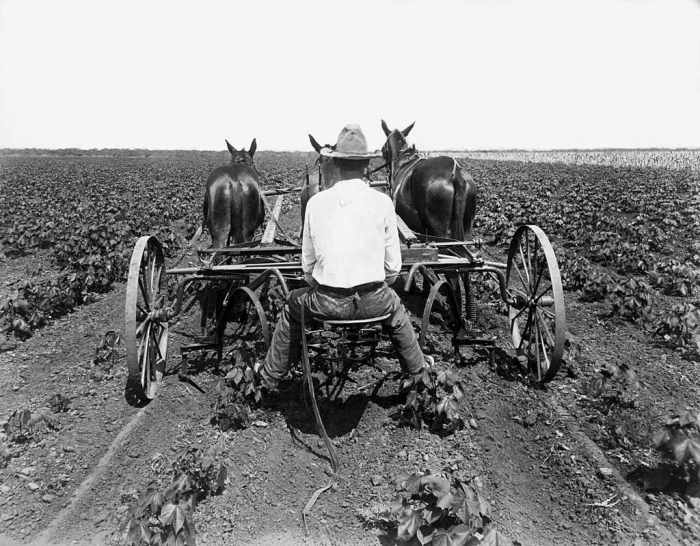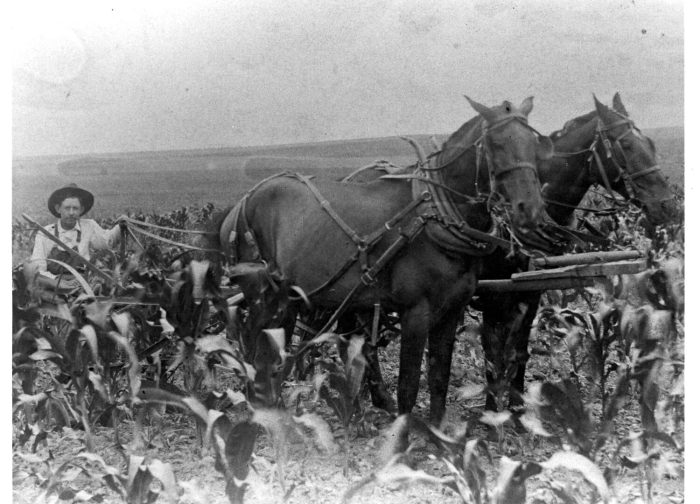
Were there laws before agriculture? This intriguing question delves into the foundations of human social organization and governance, long before the advent of settled agriculture and its transformative effects on human societies. While we often associate law with written codes and formal institutions, the concept of social order and rules predates these developments. To understand the origins of law, we must look to the hunter-gatherer societies that thrived for millennia before the agricultural revolution.
These early communities, nomadic and reliant on hunting and gathering for sustenance, developed intricate social structures and systems of control based on kinship, tradition, and oral law. These informal mechanisms, often rooted in shared beliefs and values, served to maintain order, resolve disputes, and ensure the survival of the group. As we explore these pre-agricultural societies, we gain a deeper appreciation for the evolution of law and its enduring role in shaping human civilizations.
The Concept of Law

The concept of law is fundamental to human societies, providing a framework for order, justice, and the regulation of behavior. Law, in its broadest sense, encompasses a set of rules and principles that govern the conduct of individuals and institutions within a society. It is a complex and multifaceted concept that has evolved over centuries, shaped by cultural, social, and political forces.
Evolution of the Concept of Law
The concept of law has a long and complex history, with its origins tracing back to the earliest human societies. While formal legal systems, as we know them today, emerged with the rise of states and civilizations, the foundations of law can be found in the informal social norms and customs that governed pre-agricultural societies. These norms, often passed down through generations, served to regulate social interactions, resolve disputes, and maintain order.
Examples of Pre-Agricultural Societies and Their Informal Systems of Social Control
Pre-agricultural societies, often characterized by small, nomadic groups, relied heavily on informal systems of social control. These systems were based on shared values, traditions, and a strong sense of community. Examples of such societies include:
- Hunter-Gatherer Societies: These societies, often nomadic and reliant on foraging and hunting, had relatively simple social structures. They relied on shared customs and traditions to maintain order and resolve disputes. For example, the !Kung people of the Kalahari Desert in southern Africa used social sanctions, such as ostracism or ridicule, to deter individuals from violating social norms.
- Early Agricultural Societies: As humans transitioned to agriculture, they formed more settled communities. These societies developed more complex systems of social control, often based on kinship, lineage, and shared religious beliefs. For example, the ancient Egyptians had a system of laws based on the concept of Ma’at, which emphasized order, justice, and balance.
Pre-Agricultural Societies and Social Structures: Were There Laws Before Agriculture
Pre-agricultural societies, characterized by hunter-gatherer lifestyles, played a pivotal role in shaping human history and social organization. These societies, existing for the vast majority of human history, developed complex social structures and governance systems that allowed them to thrive in diverse environments.
Kinship, Tradition, and Oral Law in Pre-Agricultural Societies
Kinship, tradition, and oral law were fundamental elements of social organization and governance in pre-agricultural societies. These elements provided a framework for social cohesion, conflict resolution, and the transmission of knowledge and values across generations.
- Kinship played a central role in pre-agricultural societies, forming the basis of social organization and identity. Extended families and clans provided support, protection, and a sense of belonging.
- Tradition, deeply ingrained in daily life, served as a guide for behavior and decision-making. Rituals, ceremonies, and stories passed down through generations reinforced social norms and values.
- Oral law, transmitted through storytelling and shared knowledge, established rules and customs governing behavior, resource management, and conflict resolution. These unwritten laws were often flexible and adapted to specific circumstances.
Environmental Factors and Social Norms
The environment profoundly influenced the development of social norms and customs in pre-agricultural societies. These societies adapted their practices to the specific challenges and opportunities presented by their surroundings.
- Resource Availability: Hunter-gatherer societies developed strategies for managing and accessing resources, including hunting, gathering, and fishing. These strategies often involved cooperation and division of labor, shaping social structures and roles.
- Climate and Geography: Climate and geographical features significantly impacted social organization. For example, nomadic groups adapted to seasonal changes, while settled groups developed more complex social structures in areas with abundant resources.
- Environmental Hazards: Societies developed norms and customs to mitigate risks associated with natural disasters, predators, and disease. These practices often involved collective action, cooperation, and knowledge sharing.
The Impact of Agriculture on Social Structures

The advent of agriculture marked a profound shift in human history, triggering a cascade of changes in social organization, legal systems, and the very fabric of human existence. This transition from nomadic hunter-gatherer societies to settled agricultural communities fundamentally reshaped the way people lived, interacted, and governed themselves.
The Rise of Sedentary Life and Property Ownership
Agriculture, by its very nature, necessitates a sedentary lifestyle. Unlike hunter-gatherers who moved in search of food, farmers settled in one place, cultivating land and tending to livestock. This shift to a settled existence had a profound impact on social structures. The need to protect crops and livestock led to the development of property rights, marking a departure from the communal ownership prevalent in pre-agricultural societies.
Changes in Social Organization and Hierarchy
Agriculture also spurred the growth of complex social hierarchies. As societies transitioned from small, egalitarian bands of hunter-gatherers to larger, more settled communities, specialized roles emerged. Farmers, artisans, and priests developed distinct skills and social positions, creating a stratified society with varying levels of power and influence. The emergence of leaders and rulers, often associated with land ownership and agricultural surplus, further cemented these hierarchies.
The Development of Legal Systems
The transition to agriculture also brought about the need for more sophisticated legal systems. As societies became more complex, disputes over land ownership, resource allocation, and social order increased. To address these challenges, formalized legal systems emerged, incorporating laws, regulations, and dispute resolution mechanisms. These systems, often codified and enforced by rulers or designated authorities, helped maintain social order and stability.
Comparison of Pre-Agricultural and Agricultural Societies
| Characteristic | Pre-Agricultural Societies | Agricultural Societies |
|---|---|---|
| Social Organization | Small, egalitarian bands with limited specialization | Larger, stratified communities with specialized roles and hierarchies |
| Property Ownership | Communal ownership of resources | Private ownership of land, livestock, and other resources |
| Conflict Resolution | Informal mechanisms based on consensus and social pressure | Formal legal systems with codified laws and designated authorities |
| Food Production | Hunting, gathering, and foraging | Cultivation of crops and domestication of animals |
| Settlement Patterns | Nomadic or semi-nomadic | Sedentary, settled in one place |
Early Written Laws and Codes
The emergence of agriculture and the rise of complex societies led to the need for formalized legal systems to regulate social interactions and maintain order. With the development of writing, early civilizations began to codify their laws, creating written records that served as a foundation for their legal systems. These early written laws and codes offer valuable insights into the values, beliefs, and social structures of ancient societies.
The Code of Hammurabi
The Code of Hammurabi, dating back to the 18th century BCE, is one of the earliest known written legal codes. It was created by Hammurabi, the king of Babylon, and is a comprehensive set of laws covering a wide range of social and economic activities. The code is written on a large stone stele, which is now on display at the Louvre Museum in Paris.
The Code of Hammurabi is notable for its emphasis on retribution and the principle of “an eye for an eye, a tooth for a tooth.” The code Artikels specific punishments for various offenses, ranging from minor transgressions to serious crimes. It also addresses issues such as property rights, contracts, family law, and slavery.
The code is organized into a series of articles, each stating a specific law and its corresponding punishment. For example, Article 196 states: “If a man has knocked out the tooth of a man of his own rank, his tooth shall be knocked out.” This principle of retribution was a common feature of ancient legal systems and reflected the belief that justice should be proportionate to the offense committed.
The Code of Hammurabi provides valuable insights into the social and legal structures of ancient Mesopotamia. It demonstrates the importance of written law in regulating social interactions and maintaining order. The code also reveals the values and beliefs of the Babylonian society, such as the emphasis on retribution and the importance of social hierarchy.
The Role of Writing in Codifying and Enforcing Laws
The development of writing played a crucial role in the codification and enforcement of laws in early agricultural societies. Writing allowed for the creation of permanent records of laws, making them accessible to a wider audience and ensuring consistency in their application.
The use of written laws also contributed to the development of legal institutions, such as courts and judges. With written laws, it became possible to establish a system of legal procedures and precedents, ensuring that laws were applied fairly and consistently.
Key Themes and Principles of Early Legal Texts, Were there laws before agriculture
Early written laws and codes share several key themes and principles, including:
- Retribution: Many early legal texts emphasized the principle of retribution, where punishments were proportionate to the offense committed. This principle reflected the belief that justice should be served and that wrongdoers should be held accountable for their actions.
- Social Hierarchy: Early legal systems often reflected the social hierarchy of the time. Laws were often applied differently based on the social status of the individuals involved. For example, punishments for crimes committed by members of the elite class were often less severe than those imposed on commoners.
- Protection of Property: Early legal texts often included provisions for the protection of property rights. This was essential for maintaining social order and ensuring the stability of agricultural societies, where land and other resources were crucial to survival.
- Family Law: Many early legal texts addressed issues related to family law, such as marriage, divorce, inheritance, and child custody. These laws reflected the importance of family in ancient societies and the need to regulate relationships within the family unit.
- Contract Law: Early legal texts also included provisions for contract law, which governed agreements between individuals and groups. This was essential for facilitating trade and economic activity in agricultural societies.
The Evolution of Legal Systems
The evolution of legal systems is a complex and fascinating journey that spans millennia and reflects the changing social, political, and technological landscapes of human civilization. From the rudimentary norms of early agricultural societies to the sophisticated legal frameworks of modern nation-states, legal systems have evolved to address the evolving needs of human societies.
The Development of Legal Traditions
The development of different legal traditions, such as common law, civil law, and religious law, has shaped the legal landscapes of various regions of the world. These traditions emerged from distinct historical, cultural, and philosophical contexts, and they continue to influence legal practices and principles today.
- Common Law: Originating in England, common law is based on the principle of *stare decisis*, which means “to stand by things decided.” This tradition relies on judicial precedent, where judges are bound by the decisions of previous courts in similar cases. Common law is characterized by its flexibility and adaptability, as judges can interpret and apply existing laws to new situations. It is prevalent in countries such as the United States, Canada, Australia, and India.
- Civil Law: Rooted in Roman law, civil law is based on codified statutes and legal principles that are systematically organized into comprehensive legal codes. Judges in civil law systems are primarily tasked with interpreting and applying these codes to specific cases. Civil law is known for its emphasis on logic, clarity, and consistency, and it is prevalent in countries such as France, Germany, Italy, and Spain.
- Religious Law: Religious law derives its authority from religious texts and teachings. It encompasses legal systems based on religious principles and interpretations, such as Islamic law (Sharia), Jewish law (Halakha), and Hindu law. Religious law often plays a significant role in personal, family, and societal matters, and it can coexist with other legal systems in some countries.
Final Conclusion

The transition from hunter-gatherer societies to settled agricultural communities marked a profound shift in human history, impacting social structures, property ownership, and the very nature of law. While pre-agricultural societies relied on informal systems of social control, the rise of agriculture brought about the need for more formal legal systems to address the complexities of land ownership, resource allocation, and conflict resolution. The emergence of written laws and codes, such as the Code of Hammurabi, further solidified the development of legal systems, providing a framework for governance and social order. As we trace the evolution of legal systems from early agricultural societies to modern times, we gain a deeper understanding of the enduring influence of these early foundations and the remarkable adaptability of human societies in creating frameworks for justice and social harmony.
Answers to Common Questions
What are some examples of pre-agricultural laws?
Pre-agricultural societies relied on informal laws, such as customs, traditions, and kinship ties. For instance, in many hunter-gatherer communities, the elders played a significant role in dispute resolution and maintaining social order. They relied on their knowledge of the group’s history, customs, and traditions to guide their decisions. These informal systems of social control were effective in ensuring the survival and well-being of the group.
How did the rise of agriculture impact the development of laws?
The transition to agriculture brought about significant changes in human societies, including the development of more formal legal systems. The shift from nomadic lifestyles to settled communities, coupled with the emergence of private property and resource scarcity, led to new challenges and conflicts. This required the creation of more structured laws to regulate land ownership, inheritance, and resource allocation.
What are some examples of early written laws?
Some of the earliest known written laws include the Code of Hammurabi (circa 1750 BCE), which Artikeld a comprehensive legal system for ancient Mesopotamia. This code covered a wide range of issues, including property rights, contracts, personal injury, and crime. Other early legal texts include the Laws of Manu (ancient India) and the Twelve Tables (ancient Rome), which reflect the development of legal systems in different parts of the world.




